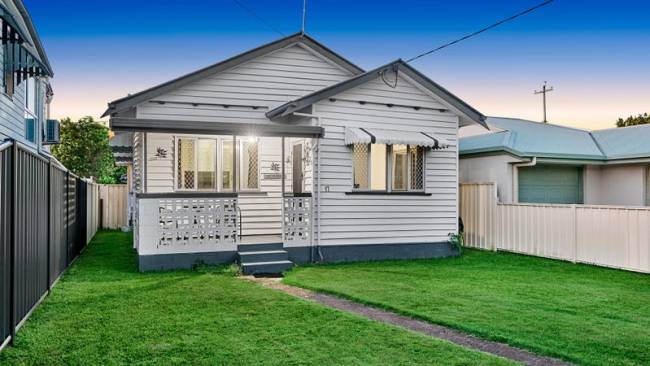The secrets behind Sydney’s best beaches
While we might take the sandy shores of our beautiful city for granted, many of our best beaches have their own secrets, histories and favourite characters. Read on to discover Sydney’s secret swim spots and shed some new light on the places you already know.
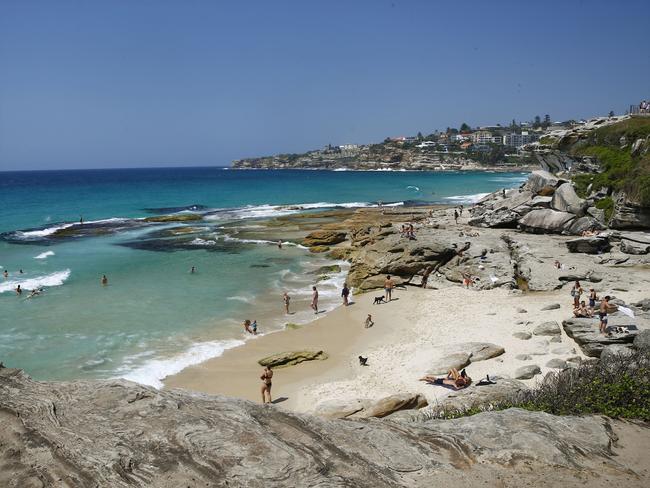
Property
Don't miss out on the headlines from Property. Followed categories will be added to My News.
We’re a water-loving nation and our swimming rituals are well and truly established (if simple). We grab our towels and sunscreen and head for a dip at our favourite swimming spot. Easy.
But while we might take them for granted, many have their own secrets, histories and favourite characters, who are as much of the DNA of the place as the sea and the sand.
In sticking to our traditional locations, we may be missing out. You see, throughout the eastern suburbs, many of these gems are so tucked away you may have no idea they exist. But they do and they’re truly spectacular – we’re talking turquoise water, golden sand, breath-taking views and best of all, few visitors.
Read on to discover Sydney’s secret swim spots and shed some new light on the places you already know.
Mackenzies Bay
If you’ve not heard of Mackenzies here’s why. It doesn’t always exist. You see, this mythical mini beach appears among the rocks north of Tamarama, only occasionally, depending on a magical combination of the perfect tides, storms and movement of sand.
Locals are in the habit of calling it Seven Year Beach because it appears so irregularly. However, last summer, Mackenzies appeared in early December.
It’s a favourite spot with surfers, despite the vicious rocks and the local talk that the area is a shark nursery. Whether that’s true or nothing more than urban legend, the surfers pay no heed.
While it’s used by swimmers and sunbakers, Tamarama Surf Life Saving Club Captain, Holly Love, says there are some locals who can barely contain their joy when they discover Mackenzies is here – those of the four-legged variety.
“Mackenzies is a great spot for dogs to play,” Holly says.
“A lot of local residents bring their dogs down and they have a great time running around, jumping off rocks, and catching waves in.”
Of course, Tamarama is there all the time but, statistically, it’s the most dangerous beach on the eastern seaboard. The safest spot to get in the water is along the reef at the northern end of the beach.
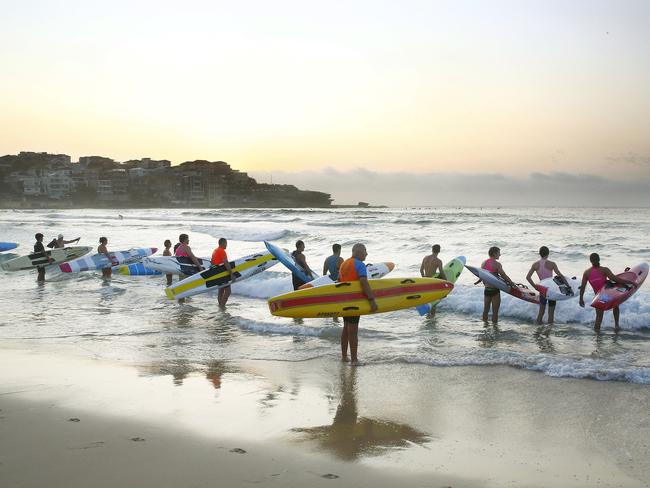
Bondi
Bondi in and of itself is no secret. This stretch of coastline is world famous and not only for its jaw-dropping natural beauty. Bondi is synonymous with beautiful people, bronzed lifesavers, international crowds (at least in non-COVID times) and, on Christmas Day, drunken Brits clutching blow-up kangaroos.
But while the beach is famed – it does have a secret – and to witness it you’ll need to hit the sand before dawn.
For when the sun rises over Ben Buckler, the northern headland of Bondi, this grand dame of beaches is deeply tranquil, particularly when beams of light hit the windows of the Icebergs club, turning them a stunning pinky gold.
It is at this time of day that Bondi’s true, hidden character reveals itself. Bondi’s stalwarts are on the beach – the paddle boarders in training from the two Bondi surf lifesaving clubs, the swim clubs, yoga groups and the keen-to-be-fit who are out with their personal trainers.
This other, quieter side of Bondi life gets less attention and that’s how the locals like it. One of those locals is Bob ‘Boofa’ Johnson, who has been a resident and a member of the North Bondi Surf Life Saving Club since 1964.
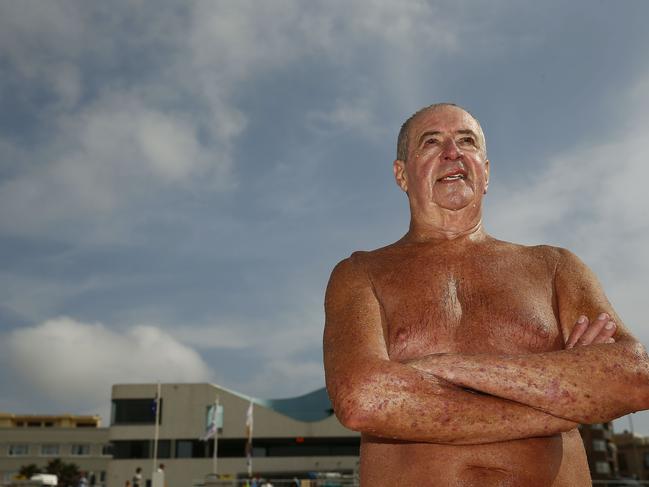
Johnson admits the area has changed drastically, but in the milky pre-dawn light it’s as though the Bondi he has loved since he was a teen is still right in front of him. That warms his heart.
At the same time Johnson is realistic about how much his beloved beach has changed throughout the years.
“It’s just progress isn’t it,” he says warmly.
“We have more visitors. People from everywhere.
“It can get crowded. But we don’t mind where people are from – as long as they behave themselves.”
Boofa can be found at the northern end of the beach. But South Bondi has its charms too, particularly for boardriders. Here the waves can be a bit rough and there are fewer swimmers – just the way the surfers like it.
Brave (or stupid) are those who venture in. If you’re there on a Wednesday morning, you’ll likely see the pink swim caps of Garry Luscombe and his informal swim group ‘Wednesday 6am with Garry’. The group begins at North Bondi, where it’s easier to get in the water, and then swims across the bay to South Bondi.
The swim collective kicked off when a trainee lifesaver asked Garry if he would like to continue bay swims after her official training ended. That was 2010 and for the first year it was just the two of them. But in the following years the group grew and grew – and grew. Garry’s informal swim club numbers have reached about 40.
“I can’t tell you the number of people who, say ‘Garry, Wednesday is the best day of my week’,” he says.
“It’s an hour for you and you don’t have to think about anything else. Your head’s in the water and you tend to be isolated from the cares of the world.”
His followers wear “I swim with Garry” T-shirts and it has become a place where friendships are forged – as well as swim physiques.
For those who prefer calmer water, there’s also Icebergs at South Bondi. It may be Sydney’s most Instagrammed pool, but it’s been a serious winter swimming club since 1929. To become an official Iceberg, you need to compete in the weekly Sunday races from May until September for five years, and you’re only allowed to miss one in every four weeks – and then you have to write a letter, not send an email, explaining your absence.
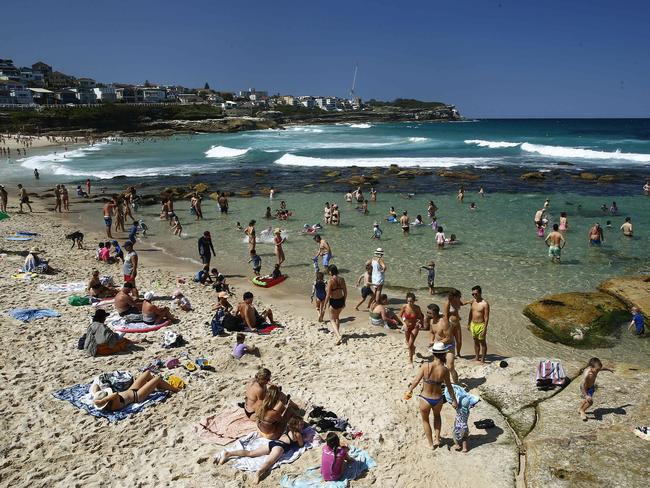
The Bogey Hole, Bronte
If you’re at Bronte early enough, you might spot 80-year-old Elizabeth Muir, who has been swimming here at six o’clock every morning since moving to the area 25 years ago. But she’s not the only one – there are quite a few locals who never miss their morning dip.
“Bronte has the most marvellous swimming community,” Elizabeth says.
“It’s the same people every time and you’ll know someone who can make you a paella, or replace your knee, or find you opera tickets.”
Elizabeth says there have even been times when one of the regulars has been in hospital and the community members have taken them a bottle of Bronte seawater.
For a bit of activity, there’s the surf, but Elizabeth loves the Bogey Hole, where a loose ring of rocks offers some protection while still allowing a natural ebb and flow.
“The Bogey Hole is beautiful,” she says.
“People like to put goggles on and look at the fish. There are lots of fish and you can touch them – there are so many they sometimes crowd you.
“Occasionally you see a grouper and everyone loves it.”
The odd blue-ringed octopus has been found here too, so keep an eye out.
Clovelly Bay
Head to this majestic location first thing and you’ll see yoga devotees practising asana on the concrete platforms near the breakwater on the southern side. These platforms are the perfect place to take in the sunrise while perfecting your warrior pose. They’re also an excellent jumping off point for those who wish to get into the deeper water of the bay.
The real secret of Clovelly, however, is under the sea. For here is where you’ll find the famous and oh-so friendly blue groupers – the beautiful, slow-moving fish that reside in the rocks.
The most famous of all groupers was Bluey, who was reported to have been killed by a spear fisherman in 2002. Bluey was a gentle giant and was loved by locals and visitors alike and even then-premier Bob Carr described those responsible for the death as mongrels.
It later emerged that Bluey was still alive and the victim had been another grouper. Since then there have been countless Bluey ‘sightings’ with the fish entering true legendary status.
“Bluey will always be here,” says Glen Clarke, who’s been a member of the Clovelly Surf Life Saving Club for more than 40 years.
“He may vary in size from time to time, but he will always be here.”
Old-timers will recall that Clovelly was once the favourite haunt of famed underworld figure Perce Galea. The casino operator and renowned gambler moved to Coogee in the ‘50s and belonged to the Clovelly Life Saving Club, swimming daily – no matter the weather.
Gordons Bay
Near Clovelly is the often overlooked Gordons Bay which offers some seclusion for swimmers and snorkellers. The small beach can only be accessed by foot from the Bondi to Coogee walking trail and the row of boats on the beach gives it the air of a European fishing village.
For divers (and snorkellers on a clear day), there’s a 600-metre underwater nature trail marked with a chain between concrete-filled drums. But the local lifesavers recommend staying close to the rocks on the north side and avoiding the bombora further out which has treacherous rips underneath it.
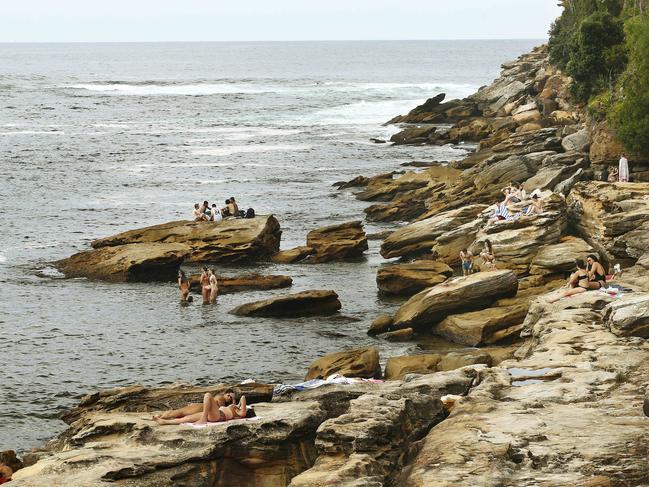
Wylie’s Baths
Wylie’s Baths are perfectly placed at the southern end of Coogee Beach.
Tucked away from view – and the wind – this glorious swimming spot faces due north and catches plenty of sun making it a bather’s paradise.
“Walking into Wylie’s Baths for the first time is something you will never forget,” says Tony Cousins, who has been swimming here for the past two decades.
“It’s just stunning.”
Established in 1907 by champion swimmer Henry Alexander Wylie, the baths were one of the first mixed gender bathing pools in Australia and today, are one of the last surviving examples of what was once a common style of ocean pool.
Clearly they’re incredible. But here you will get more than just beauty. You will also be surrounded by history.
“You certainly get a sense of heritage here,” says Tony, who is also a member of the Wylie’s Baths Trust, the group trusted to oversee the bath’s upkeep.
“Some of the iron bar posts holding up the timber deck structure that overlooks the baths are original. This means they’re more than 120 years old.”
And thanks to the trust they will remain.
Although there are only about 400 season pass holders, Wylie’s Baths has been known to attract more than 50,000 visitors a year and it even featured in the 2020 Tourism Australia campaign alongside entertainer Kylie Minogue and comedian Adam Hills, before it was cut short by last summer’s tragic bushfires.

Seven Shillings Beach
This beach is a genuine secret with many locals under the false impression that it’s private property because of the chain-link fence and gate at its entryway.
But, despite once being closed to the public because the waterfront residents complained, Seven Shillings Beach has actually been open to all (between sunrise and sunset) from 1994.
When you go there take a sneak peek at the homes that surround it. One of the most impressive is Fairwater, home of the late Lady Mary Fairfax, purchased by Atlassian billionaire Mike Cannon-Brookes in 2018 for an eye-watering $100 million.
At the other end of the strip you’ll find Redleaf Beach. This secret spot was renamed Murray Rose Pool in 2012 in honour of the local Olympian who swam here, but the vast majority of locals still refer to this sweet harbour spot as Redleaf. With its shark netting, wooden boardwalk around the edge of the pool, and pontoons in the centre, it’s a popular family spot and gets busy on the weekends.
The kiosk at the entrance does a brisk trade and the most popular menu item is the $16 ‘Breaky Bruschetta’ with smashed avocado, grilled haloumi, cherry tomatoes and poached eggs.
Lady Martins Beach, Point Piper
If you were unaware this 160m Point Piper beach even existed you’re not alone. Few know about it – and that’s a large part of its charm. To get to Lady Martins, you go down a quiet cul-de-sac and then along a narrow path beside the exclusive Royal Prince Edward Yacht Club, which was formed in 1920, or around the rocks at low tide. Named after Lady Isabella Martin, the wife of the NSW Premier Sir James Martin, the yacht club bought the beach in 1923 to keep it private, but it remained open for public use.
The quiet beach has spectacular views of Shark Island … and into the backyards of some of Sydney’s rich and famous. You might even catch a glimpse of local residents Malcolm and Lucy Turnbull at their boathouse or on the jetty at the bottom of their mansion.

Milk Beach, Vaucluse
Milk Beach is a tiny, quiet strip of secluded sand sitting below Strickland House on the Hermitage Foreshore Track.
As you walk along the path to get to the beach, there’s an information sign letting you know that this area “has the largest remnant of intact bushland on the south side of Sydney Harbour”. Although the beach has gained a bit of a party reputation in recent years, it’s the natural environment that the National Parks and Wildlife Service celebrates, which is why it’s protected as part of the Sydney Harbour National Park.
“The vegetation is typical of the types of woodland and heath that covered much of the area prior to European settlement,” the sign reads. That includes a species called the Nielsen Park She-Oak that was discovered here in 1986 and hasn’t been found anywhere else in Australia.
Milk Beach has stunning views of the city and the Harbour Bridge. But it’s just one of the swimming spots worth visiting along the 1.8km Hermitage Foreshore Track that traces the waterline here. Tingara Beach, Hermit Beach and Queens Beach are also options for getting away from the crowds of Bondi. There’s limited on street parking in Vaucluse Rd, Wentworth Rd and Carrara Rd – but bus routes will also drop you nearby.

Shark Beach, Nielsen Park
Most people just call it Nielsen Park but officially the water here is called Shark Beach. (You can understand why swimmers don’t want to use that name.) Thankfully the shark net makes it safe and the shady park, picnic tables and kiosk mean it’s a popular spot for families – although if you want to go with more than 20 people, you’ll need to book in advance. There’s also nearby Bottle and Glass Point, a special spot for a picnic with sensational views of the harbour.
Stefan Kwee has been working at the Nielsen Kiosk for the past eight years.
January and February are the best months for swimming, he says, although plenty of braver souls take the plunge all year round. But be warned – that pretty blue sea is icy in the colder months.
“Don’t let this water deceive you,” Stefan warns.
“The most deceiving months will be September and October. It will look amazing with the sunshine and everything, but as soon as you jump in, I swear, you’ll regret it.”
Parsley Bay Reserve, Vaucluse
Parsley Bay is one of those harbour beaches with million-dollar views … or probably actually much more, considering just a few doors away is the property, Phoenix Acres, which sold for a record-setting $67 million.
This is the playground of the rich and famous, with celebrities such as Jesinta Franklin regularly posting photos of herself swimming in Parsley Bay’s cool waters.
Franklin says she often goes for a dip in the ocean before a long flight. “It’s the best feeling!” she has said on Instagram.
Although you can swim off the beach next to the grassy reserve, many locals walk along the path cut into the cliffs on the northern side to a small pier and rock shelf where there’s deeper water.
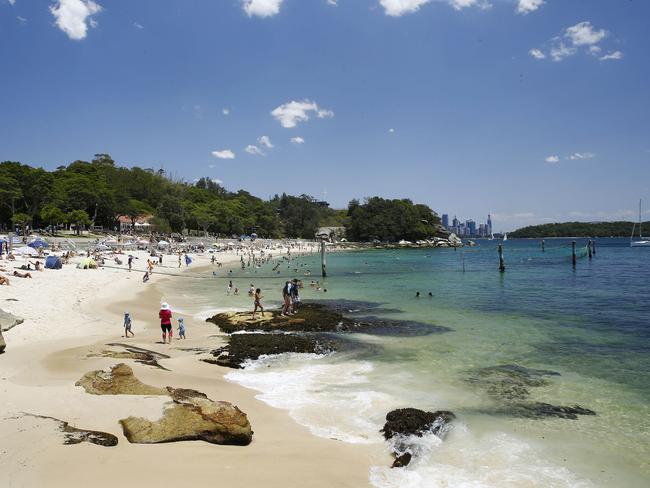
Camp Cove, Watsons Bay
Camp Cove, at the northern end of Watsons Bay, is the only harbour beach in the eastern suburbs with a lifeguard.
John Hamilton has been working here since 2006 and is normally on duty on weekdays.
“There’s a lot of first aid – some days you might do 10 or 15 cuts, people just needing to be patched up before they go,” he says.
“If you know someone might have a certain medical condition or they might have a bit of trouble getting out of the water when they finish their swim because they’ve got a bad knee, you’re looking out for that,” he says.
The Woollahra Council lifeguard is on duty every day from 9am to 5pm during the summer school holidays, every weekend until Easter, and then back again for weekends from late October.
Although it’s generally a safe and protected beach, the best area to swim is in the boat exclusion zone marked by the white poles and yellow markers at the southern end. Locals also say it has the best water quality in the harbour.
Lady Bay Beach, Watsons Bay
A few hundred metres through the South Head bushland from Camp Cove is Lady Bay Beach (or Lady Jane Beach, as it’s more commonly known).
It’s one of Sydney’s few nude beaches but, with lots of boats sailing past and a popular walking track above, it’s certainly not one of the most secluded.
Still, this small patch of sand offers a great view of Middle Head and the chance to relax in a clothing-optional environment. One thing to bear in mind – while it is clothing ‘optional’, the regulars expect you to strip down to your birthday suit and if you don’t you can expect some disapproving (or maybe it’s disappointed?) looks.
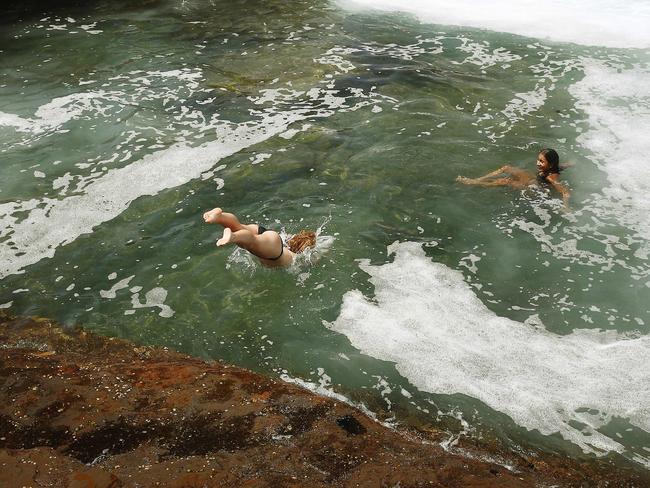
Giles Baths
Giles Baths is located at the foot of the northern headland of Coogee Beach and despite being a legitimate slice of heaven, it is one of the lesser-known harbour pools.
You can access it from the Coastal Walkway in Dunningham Reserve, near where the Bali Memorial stands, or walk along the rocky foreshore north of Coogee Beach. The original entry portico that announces “Giles Gym and Baths” remains to this day and if you take a moment you can almost feel the history.
The original gym and baths were a popular gathering place for Coogee locals from the moment it opened its doors in 1928 and folk from all walks of life mixed amicably. Sportsmen, racing identities, police officers, criminals and politicians were often spotted here sharing a dip and a laugh.
Today you will find men and women of all ages taking the plunge into the often rough waters (the sea can be tricky here so pay close attention to the conditions) and sunning themselves on the nearby rock ledges.
Local writer Melinda Ayre heads here when she needs creative inspiration. She loves the sounds of the crashing waves and the fact the pool tends to be quiet.
“This is a beautiful clear pool with the waves washing over the edges,” she says.
“I love to sunbake on the rocks then walk down the steps straight into the turquoise water. Don’t head there at high tide or in a big swell though … it can be rough. Better still, don’t go there at all, because this is my secret swimming spot!”
Originally published as The secrets behind Sydney’s best beaches

